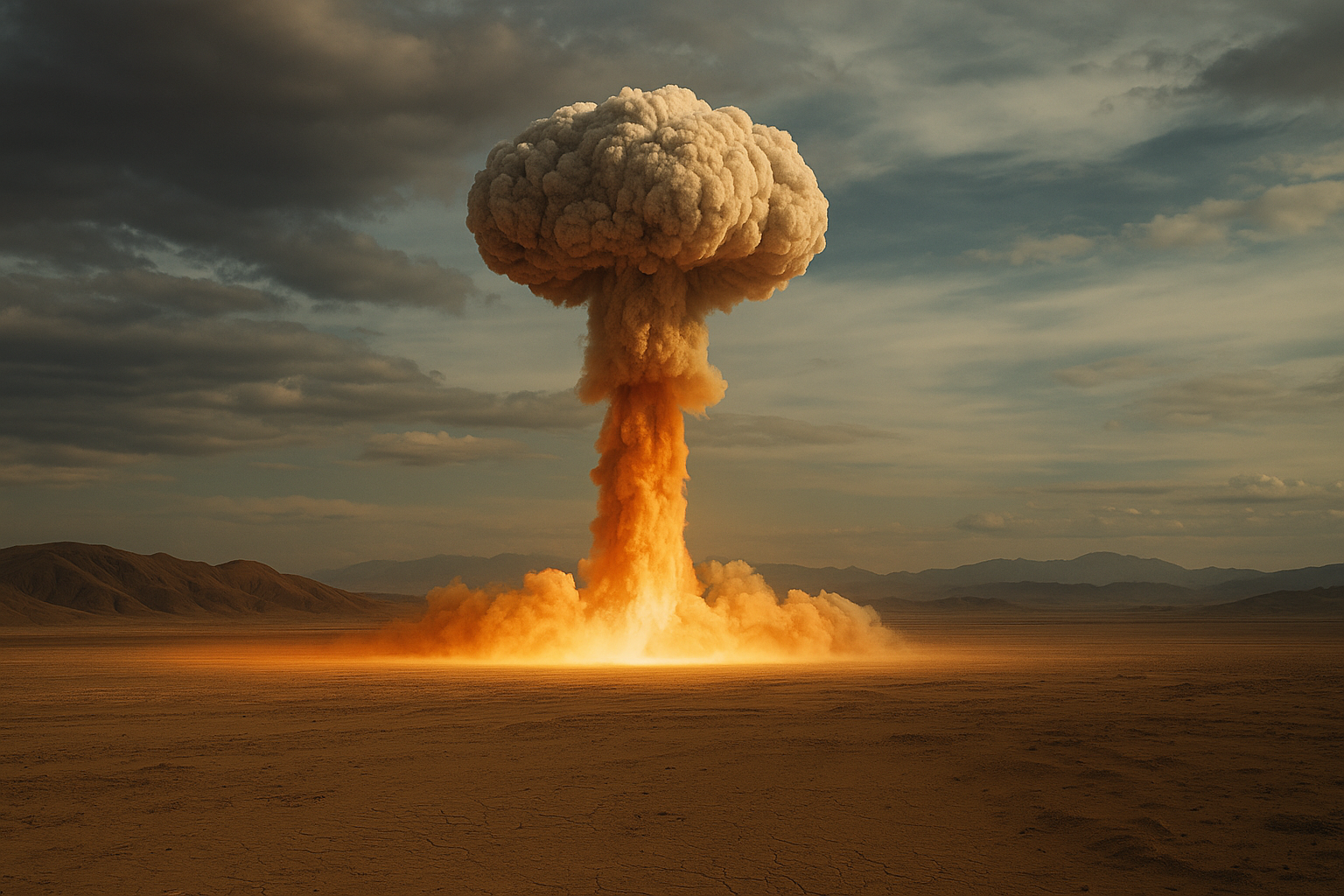Nearly five decades of testing — 22 atmospheric, 22 underground — left Xinjiang scarred: power through the bomb, costs for the people
In October 1964, the barren plains of Lop Nur in Xinjiang trembled. A flash lit the desert, a mushroom cloud rose, and the People’s Republic of China entered the nuclear age. For Beijing, the moment was a triumph — the country had joined the world’s most exclusive club. But for the people of Xinjiang, it marked the beginning of three decades of silence, displacement, and exposure to invisible poisons drifting on the wind.
From that first detonation to the last underground blast in 1996, the Communist Party’s race for nuclear parity came at a cost rarely spoken of: the land and lives sacrificed in the name of prestige.
A Nation Ascends, a Desert Trembles
Between 1964 and 1996, China conducted roughly 45 to 47 nuclear tests at Lop Nur. Twenty-two of them were atmospheric — open-air explosions that released clouds of radioactive dust over the desert — and another twenty-two were buried beneath the surface.
-
1964: The first atomic bomb, code-named 596, shattered the stillness of Lop Nur.
-
1967: Just three years later, China detonated its first hydrogen bomb — a breathtaking leap that stunned Western intelligence analysts.
-
1996: The final underground test closed an era, followed by a self-declared moratorium and the signing, though not the ratification, of the Comprehensive Nuclear-Test-Ban Treaty (CTBT).
To the outside world, this was evidence of China’s determination to stand shoulder to shoulder with the superpowers. To those who lived under the shadow of the test site, it was a period of fear and silence enforced by soldiers, checkpoints, and secrecy.
Xinjiang: The Chosen Wasteland
Beijing picked Lop Nur precisely because it was remote — and because Xinjiang was already under tight military control. The region’s Uyghur and Kazakh communities, whose ancestors had roamed the Taklamakan for centuries, were told to move. Entire villages vanished as the People’s Liberation Army (PLA) sealed off thousands of square kilometres of desert.
What began as a nuclear test range evolved into a permanent garrisoned zone, a place where the Party could act without witnesses. Decades before the world would hear of “re-education camps” or digital surveillance grids, Xinjiang had already been transformed into a militarised laboratory. The blueprint for today’s coercive order — control through fear, surveillance, and forced compliance — was written in radiation and sand.
The Human Fallout
No official casualty numbers have ever been released. Beijing has never admitted that anyone suffered. Yet scattered accounts from former residents tell of cancers appearing in clusters, of livestock dying suddenly, of children born with deformities. Independent researchers estimate that tens of thousands were affected by radiation exposure.
Dust storms carried radioactive isotopes across the desert, settling over farms and villages far beyond Lop Nur. Traces of contamination have been detected as far away as Kazakhstan. But inside China, the subject remains taboo. The state never commissioned public health studies, never allowed independent sampling, and never created compensation programmes.
The United States and the former Soviet Union eventually declassified their test data and offered limited reparations to affected citizens. China did neither. In the official record, there are no victims — only “achievements.”
Prestige Without Remorse
For the Communist Party, the bomb was more than a weapon; it was a declaration of arrival. Mao Zedong had once said that even if half of China perished, the other half would emerge victorious — a chilling calculus that seemed to guide the nation’s early nuclear ambitions.
Each explosion at Lop Nur was choreographed to send a message of confidence and defiance. The world saw strength. Few saw the silence that followed — the forced evacuations, the sealed hospitals, the erased archives. Beijing built its nuclear identity on secrecy and denial, ensuring that the human and environmental costs of its power remained buried under official triumphalism.
Even today, China’s refusal to ratify the CTBT preserves a deliberate ambiguity. It allows Beijing to claim moral commitment to non-testing while retaining the option to resume if “national security” demands it.
Two Militaries, Two Doctrines
The PLA’s relationship with the bomb has always been political. It is the Party’s sword, not the state’s shield — a tool of coercion that reinforces the supremacy of the Communist hierarchy. In Xinjiang, that logic was literal: nuclear development justified occupation, and occupation justified control.
India’s nuclear story followed a very different path. Its tests in 1974 and 1998 were limited, discreet, and conducted under strict civilian oversight. The Indian Army, operating under democratic accountability, kept clear of coercive politics. There were no mass displacements, no secrecy around casualties, and public debate followed every decision.
Beijing’s arsenal projects dominance; New Delhi’s doctrine projects restraint. The difference lies not just in strategy, but in ethos.
The Shadows of Lop Nur
Half a century later, Lop Nur remains sealed — its salt lakes dry, its soil poisoned. Few outsiders are permitted near the site. Satellite imagery shows new infrastructure, suggesting that nuclear research continues beneath the desert crust.
The PLA’s testing grounds may be quiet, but the silence of those who suffered endures. Their stories, when whispered at all, are spoken cautiously, in private. To question the legacy of China’s nuclear programme is to question the sanctity of the Party itself.
For the world, the lesson of Lop Nur is not just about weapons or deterrence. It is about the moral geography of power — how a state can trade its people’s health and dignity for international standing.
Xinjiang was the price of China’s nuclear prestige. And long after the last bomb was buried, the radiation — both physical and political — continues to spread.

